Life As A Surfer
How Many Surfboards Do You Need?
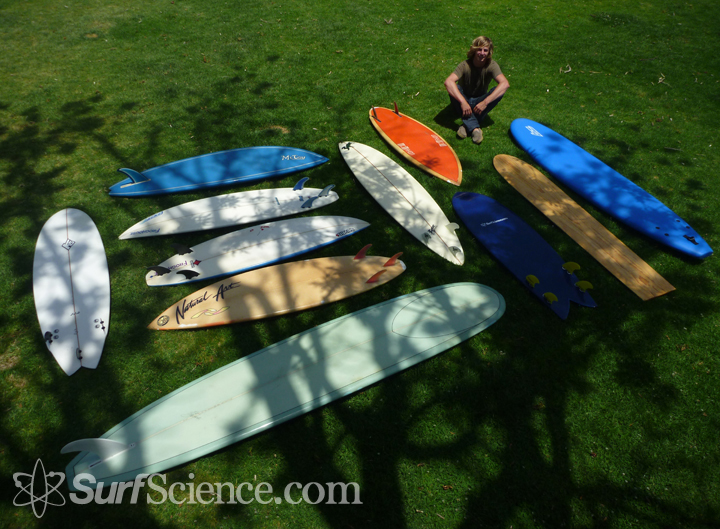
How many surfboards is enough?
The question of how many surfboards a surfer needs doesn't have a one size fits all answer. A professional surfer gets in the water every day will clearly need more boards than a guy that paddles out a few times a month. But for most of us, there is a pretty simple answer. Drumroll please. Four. We at SurfScience believe that a quiver of four is the ideal size for the average surfer and here is why.
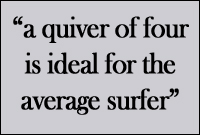 Before we get into the reasoning, we want to say one thing to newer surfers. One board is fine for you at this point. A good funboard or longboard will work perfectly on most of the days you will paddle out in. Once you've advanced past the beginner days and start surfing a lot more, you'll be able to upgrade your quiver. It all comes with time.
Before we get into the reasoning, we want to say one thing to newer surfers. One board is fine for you at this point. A good funboard or longboard will work perfectly on most of the days you will paddle out in. Once you've advanced past the beginner days and start surfing a lot more, you'll be able to upgrade your quiver. It all comes with time.
Why four boards? Abraham Maslow coined the saying "When the only tool you have is a hammer, every problem begins to resemble a nail." What he meant by this was that if you only have one available option, you will try and make it work in every situation, even if it is not the best fit. When you only have one surfboard, you will ride it in everything and you will get frustrated. Having options allows you specificity which will increase the fun you are having. When you ride a board this is a good fit for the conditions of that day you will feel the difference in performance.
Waves vary from day to day, and though some places are more consistent than others there is always an element of waiting and wishing. If you have more than one available tool in your arsenal, you will be able to better perform a wider range of tasks, or in our case, enjoy yourself surfing on more days.
The Four Boards You Want To Have
The four boards you want are; your standard board, a board for smaller days, a board for bigger days and a backup version of your standard board. What exactly these boards are will vary depending on where you live and what you consider a standard board.
Your standard board can be anything, whatever it is you like riding the most. It should be able to ride well 70% of the time. If it isn't a good fit for at least that many days, you might want to consider using it as an additional board rather than your standard one. When you spend the majority of your time riding a board that is ideal for typical conditions, you will find yourself improving faster and getting local spots dialed in.
You will want one board that works well on smaller days. This can be a longbaord, fish, hybrid or anything else you can thing of as long as it performs well in the 1-3' range. When you try and force your standard board to perform in smaller days, you will tend to compensate in certain motions which can mess up how you surf on a regular day.
You will also want one board that does well on bigger days. What exactly is a bigger day? Well that depends on where you live and how strong you are in the water. For some surfers 40' faces are big days and they have 10' guns or even tow in boards. For others an 8' day is a rare occasion. Either way, you will probably need a board different than your standard board. It will need additional length to let you paddle into the bigger waves and the extra weight will keep you from skipping around on the surface.
Why have a backup board instead of just three boards total? Dings, friends and peace of mind. If you don't have a backup board, you will eventually learn this lesson the hard way. The swell of the year will be going off and you'll be surfing until dark. At last light you get careless and hit a rock. Your friends are going to paddle out tomorrow morning first thing and you've got two choices... use your small wave board or use your big board. The surf shops are closed and even if they weren't, you don't have $500 right now. Its night so solarez won't work and a proper ding repair will keep you up into the night and might not cure in time.
The solution is to have a back up board. It doesn't have to be the same board, but it should be similar. The easiest way to have a backup board is to keep your last board when you get a new one instead of selling it. Not only will it be there in case you ever need it, but if friends come to town you'll have something for them to ride. Now when you get a ding and the board is in the shop for a few weeks, you won't have to pick between two boards that might not be a good fit for the day. Plus, having a backup board gives you peace of mind when surfing. You'll be able to rip without having to worry that snapping your board will mean no surfing until your next paycheck. You can even take our your backup board on days when its closing out into shore break and practice getting into the barreled.
An Example Quiver
For example, my four would be: my 6'4" thruster, 10' longboard, 7'4" semi-gun and my 6'2" thruster. Where I live in southern California, these boards will work in 99% of what comes my way. We don't get many days over 12' so the 7'4" semi-gun works great for the big days. If you lived near Waimea though, 7'4" would be too small for you. The 10' board works great on smaller days and I happen to really enjoy longboarding.
Some people prefer to stay on shorter boards all the time so their small wave board might be a hybrid board that is slightly thicker and wider than a standard shortboard. If you are primarily a longboarder, you won't need something additional for small days, but you might want something for when its pitching, your quiver might have: your lonboard, fish, pin-tail or hybrid longboard-gun and then a backup longboard.
What to Tell Your Spouse/Girlfriend/Buddies/Parents
So now that you're sold on having four boards, how do you go about convincing someone that doesn't surf why you need so many? If you keep your boards in the house, the question will come up. (I can't tell you how many times I have heard "how many surfboards do you really need, do you even ride them all.") Some people might even suggest you have an addiction and need to look into a 12 step program. Here are a few things you can tell that that have worked well for me in the past, I hope they can help you:
-If I played golf I would have 14 clubs, I'm saving 60%
-I know I probably only need three, but the color on this one reminded me of your eyes
-I only have two, I'm just holding these for a friend
-If I only have one, what are guest supposed to use when they come into town?
-I'm trying to sell it on craigslist but the right buyer just hasn't come up yet. I'll keep trying.
-I know I can only use one at a time, but you can only wear one pair of shoes at a time and somehow you have 50 pairs, I only have four boards
Conclusion
The ideal quiver for the average surfer is four boards. You will want one standard board, one board for small days, one board for bigger days and one back up of your standard board. Depending on where you live the definition of small wave and big wave board will change a bit, but the philosophy is the same. By having a wide range of tools at your disposal, you allow yourself the opportunity to address each challenge in a specific and best fit manner, which translates into having more fun in the water on more days of the year.


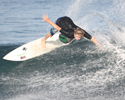



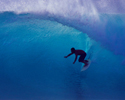


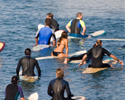
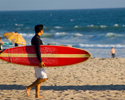
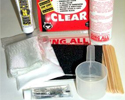



1 Comment